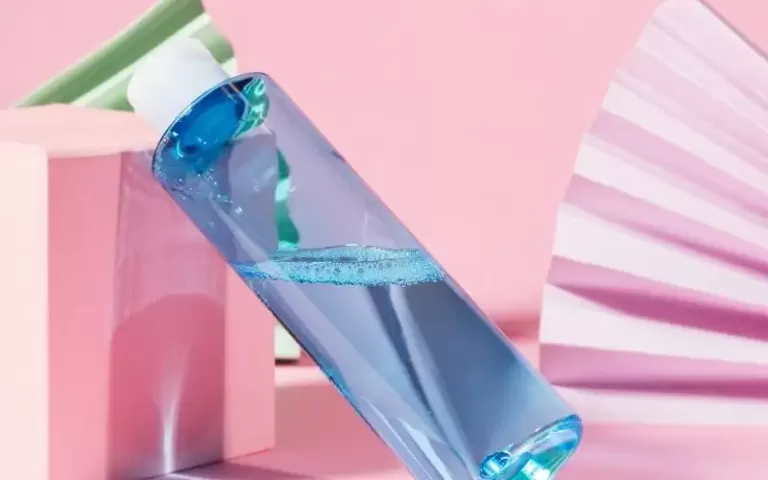Cracked Heels: Simple Ways To Cure

If cracked heels plague you, you’re not alone. While cracked heels may be unsightly, they’re usually not painful or serious. However, they can lead to more serious problems, such as infection and deeper fissures, if left untreated.
Fortunately, caring for dry and cracked heels is not too difficult. The skin texture and quality of your heels can be improved and prevented with several simple ways and natural therapies, some of which are believed to be highly successful.
Why And How The Heels Crack?
Your skin serves as a human shield, guarding you against contaminants and viruses. But if it’s hurt, it can’t adequately defend you. When the skin around your heels splits, cracked heels result. A combination of dryness and pressure causes cracked heels because the skin can’t maintain moisture levels and eventually become brittle and fractures.
The development of tiny cracks in dry, damaged skin may lead to cracked skin. These tears can potentially develop into fissures, which are more serious cracks. When you’re standing, your heels support the weight of your body, so they might become damaged if they don’t receive enough moisture and dry skin accumulates.
Potential Causes For Cracked Heels
You may develop dry, cracked heels for various reasons, including wearing shoes that expose your feet, and a lack of moisture can cause cracked heels. Knowing the causes might help you understand the problem and possibly prevent it in the future if you’ve observed signs like dry skin thickening around your heels, cracked skin, or heel pain.
Some of the most typical reasons why heels crack:
- Dehydration: Lack of moisture is the main reason why heels fracture. Your feet frequently have dry, flaky, and chapped skin. This occurrence is due to the relatively low density of sweat glands in the skin surrounding your heels. Cracked skin can be made worse by any of the issues listed below if your skin is very dry since there is less suppleness.
- Aging Skin: Cracks may appear more frequently as you age because thick, dry, scaly skin loses its suppleness with time.
- Pressure: Long periods of standing, especially on hard surfaces at work or home, can strain the skin on your heels.
- Deficiencies: Your heel health may suffer if you don’t get enough vitamins, minerals, and zinc in your diet.
- Health Disorders: Cracked heels can be caused by athlete’s foot, psoriasis, eczema, thyroid disease, diabetes, and other skin conditions.
- Genetics: You may be genetically inclined to calluses and thick, dry skin around your heels, which can cause cracked heels.
- Obesity: Being overweight might cause additional stress on the heel-fat pad. Depending on how flexible the skin is, this could cause it to expand sideways and put pressure on the feet, resulting in cracked heels.
- Hygiene: Inadequate foot hygiene is another factor that may contribute to cracked heels, although using harsh soaps and aggressive scrubbing can also be a contributing factor.
- Ill-Fitting Shoes: Wearing shoes that don’t fit well or are uncomfortable may also result in cracked heels.
- Open Footwear: Open-back sandals and shoes increase the risk of heel cracks by allowing fat under the heel to move sideways.
- Calluses: Another important contributor to rough skin is calluses, which are clumps of thick, dry, yellowish skin that form over injured skin to protect it. Calluses frequently crack when put under pressure if untreated. Walking barefoot and wearing uncomfortable footwear exacerbate the issue.
- Water: Frequent and long water exposures on your feet can strip away the skin’s natural oils, causing the skin to become harsh and dry. Long durations of standing in wet places, like the restroom, beach, and pools, can lead to dry and cracked heels.
Look at your routine, and if you notice anything that might affect you, like the ones listed above, try changing your current routine.
Ways To Heal Cracked Heels
Here are some quick fixes for relieving your cracked heels of their discomfort. It won’t take long before you feel terrific and back on your feet.
Cleanse Your Feet
Daily washing your feet with a moisturizing skin cleanser will help clear away cracked heels. Avoid cleansers that contain chemicals since they can make your skin even drier or irritated; lookout for cream-based cleansers that contain natural antibacterial or anti-inflammatory components.
Moisturize
Use a good, thick moisturizer at least once daily. It is necessary to moisturize the feet twice a day, once in the morning and once before bed. By doing this, you may maintain moisture in your skin, reduce loss, and even draw in more from the underlying tissues.
Intensive Healing Cream
Sometimes normal lotions fail to treat severely damaged heels, which is when you’ll need an intense healing cream. Certain moisturizers include skin-softening ingredients such as salicylic acid, alpha hydroxy acids, or urea that could aid in removing dead skin.
Moisturizing Socks
Invest in a pair of socks or shoes designed specifically for dry, cracked heels to receive additional moisturizing benefits. After applying the cream or lotion to your heels, wear these socks to reap the moisturizing and softening benefits.
Hydrate
Assure that you are drinking adequate amounts of water. Maintaining hydration greatly reduces the likelihood of developing dry, cracked skin and can even treat it. Your skin can lose around a liter of water daily, which can increase in dry conditions.
When wearing shoes that expose your heels, especially in the summer, you need to take good care of your feet day in and day out.
Treatments To Try At Home For Cracked Heels
Having broken heels could be uncomfortable if you walk barefoot. Cracks in the heels can sometimes go very deep and hurt. Here are some of the finest treatments that you can try at home for cracked heels:
Soak and Exfoliate
The skin around damaged heels is frequently drier and thicker than the surrounding areas. If you put pressure on this skin, it often splits. Your feet can benefit from a soak and some moisture.
Put your feet in plain or soapy water for about 10 to 20 minutes. Use a pumice stone, loofah, or foot scrubber to gently clean and remove the dead cells (hard, thick skin) over the cracked heels. Wash your feet again and pat dry.
Balms or Moisturizers
As an initial course of treatment, you can use heel balm or thick moisturizers for cracked heels. These contain substances that soften, hydrate and scrub away dead skin. While buying over-the-counter heel balm or thick moisturizers, look for ingredients – salicylic acid, alpha-hydroxy acids, urea, and saccharide isomerate.
First thing in the morning, apply heel balm, moisturize a few times during the day and wear protective shoes.
Liquid Bandage
A liquid bandage can be beneficial to seal off deep painful cracks and ward off infections and additional cracking. You may go about your day without worrying that the bandage will fall off, like when wrapping them in gauze or with an ace bandage, which can easily squish inside a shoe.
The liquid bandage comes as a spray, making it easier to seal off deep fissures. To provide the wounds with the ideal environment for healing, adequately clean, moisten, and seal them.
Natural Moisturizers
Apart from using over-the-counter or prescription creams, you can think about utilizing some natural moisturizers at home.
Shea butter or paraffin wax are two possible natural treatments that can help keep moisture in. Oatmeal, honey, and bananas are renowned for their calming properties and can aid in moisturizing while also reducing inflammation.
Do-It-Yourself Home Remedies For Cracked Heels
Try these home remedy combinations to help with faster healing of cracked heels.
1. Apple Cider Vinegar and Lemon
The anti-inflammatory and acidic properties help exfoliate dead skin cells and nourish your skin.
How To Use:
- Add one tablespoon of apple cider vinegar and fresh lemon juice to a small tub of lukewarm water. Immerse your feet in the tub for at least 15 to 20 minutes. Moderately scrub your heels with pumice stone or loofah.
2. Honey
Honey has been used traditionally to treat cuts, wounds, flaky facial skin, and multiple skin conditions. Its antibacterial and antimicrobial properties have been used to manage skin conditions such as contact and atopic dermatitis. Honey also moisturizes the skin, in addition to aiding in the healing and cleansing of wounds.
How To Use:
- After soaking and exfoliating your heels, you can directly apply honey to the affected areas, leave it for about 20 to 30 minutes and then wash it off.
- Another method is to make a mask using rice flour, lemon juice, and honey. Apply this mix to your cracked heels and rinse it after a few minutes. You may also leave this mask overnight for more effectiveness.
3. Tea Tree Oil and Olive Oil
Tea tree and olive oils are known to accelerate tissue repair and assist in removing dead skin. These oils can be applied separately or combined to the affected areas. The antibacterial properties help calm down inflammation. The vitamin E, vitamin K, and antioxidants in the olive oil make it an efficient natural humectant and moisturizer for dry skin.
How To Use:
- Add about seven to eight drops of tea tree oil to one-fourth cup of olive oil and mix well. After soaking your feet in lukewarm water, massage your feet gently with this mixture. Frequent applications will fade away the cracks fast.
- You can also add sesame oil and honey for more beneficial effects.
4. Coconut Oil
Coconut oil is used to moisturize mild to moderately dry skin. It is very safe to use, and virgin oil accelerates the growth of new skin cells, leading to wound healing.
How To Use:
- Coconut oil can be instantly applied onto your heels anytime and whenever needed.
5. Aloe Vera Gel and Glycerin
Aloe vera is an excellent option for dry skin because of its moisturizing and healing properties. When combined with glycerin, it works wonders to moisturize dry, cracked heels.
How To Use:
- Mix two tablespoons of pure aloe vera gel and one spoonful of glycerin. After cleansing your feet, massage your feet with the mixture. It will keep your skin moisturized and healthy if you apply it frequently.
6. Turmeric and Licorice Powder
Turmeric is renowned for its antibacterial properties that aid natural healing and help to brighten and calm down inflamed, itchy skin. Licorice powder has anti-inflammatory and antibacterial properties that may combat skin-infecting germs.
How To Use:
- Combine one tablespoon of licorice powder and two tablespoons of turmeric and make a paste by adding water. After immersing your feet for a few minutes in warm water, apply this paste to your feet, massage for a few minutes, and rinse off. This scrub can be effective in removing dead skin cells and also providing you the benefits.
7. Sea Salt and Oatmeal
Sea salt has vitamins, minerals, and other nutrients that help heal dry, damaged skin. Oatmeal’s anti-inflammatory and antioxidant properties soften the skin, enhance skin barriers, and hasten skin healing. This combination helps with dirt and grime removal and promotes the production of new skin.
How To Use:
- Combine one cup of oats, one tablespoon of honey, and 100 g of sea salt. Massage your feet with this mixture, and regular use will smoothen out rough patches and prevent further cracks in your skin.
Best Methods To Prevent Cracked Heels
You might easily get dry, cracked skin on your feet. Fortunately, there are home remedies that you may use to treat dry, cracked heels and prevent them from happening again.
- Check your heels and feet frequently to find anything unusual.
- Use cleansers and moisturizers to improve foot cleanliness and to keep skin soft.
- Limit your showers and baths to 5 to 10 minutes. Longer baths might dry out your skin and increase your risk of fissures.
- Modify your diet to include foods high in calcium, iron, and zinc. Doing so can often improve skin health, but it’s better to see your doctor before making any dietary changes.
- Consider using an exfoliating moisturizer, such as over-the-counter urea, alpha hydroxy acid, or salicylic acid lotion, to help remove dead skin and maintain the softness and suppleness of your heels.
- Apply plain petroleum jelly before going to bed.
- Wear socks at night every day since it shields your feet from the environment. Socks provide an additional barrier between your skin and the outside world, which can lessen damage to the skin’s surface.
- Avoid open-heeled footwear like flip flops and slingbacks, as well as footwear that is worn out or doesn’t fit well.
- Use chemical peels to gently exfoliate the skin’s surface layers for a better appearance and a softer feel.
- When wearing shoes that expose your heels, it’s crucial to take good care of your feet regularly.
- Avoid exposing your feet to severe temperatures, and use sunscreen to protect your feet’s exposed regions if you have sensitive skin.
- Don’t over scrub your heels using tools such as pumice stones, graters, electronic foot files, or callus shavers. Use it as directed or in moderation.
Seek Medical Help
A health issue like diabetes may be the root cause of cracked heels. Talk to a board-certified dermatologist if your dry, cracked heels are severe or do not get better after implementing these suggestions. The specialist will thoroughly examine your feet to find the root cause and advise you on further treatment options.
FAQs
Q: Does Petroleum jelly help cracked heels?
A: Yes. It can work as an overnight treatment to soothe your dry and cracked heels. Just apply it on your heels and go to bed. You can feel some changes in a very short time.
Q: Is applying milk on your cracked heel a good idea?
A: Yes, it is a good moisturizing treatment. The lactic acid in the milk softens and exfoliates dry skin and reduces the appearance of cracks on your heels.
Reference
- How to Permanently Heal & Get Rid of Cracked Heels: https://www.footandanklegroup.com/how-to-permanently-heal-get-rid-of-cracked-heels-for-good/
- Home Remedies For Cracked Heels: https://www.medicalnewstoday.com/articles/316572#home-remedies
- How to Fix Cracked Heels at Home: https://www.healthline.com/health/cracked-heel-heal#remedies
- Best Home Remedies to Soften Dry, Cracked Heels: https://www.prevention.com/beauty/skin-care/a20509027/4-ways-to-fix-your-cracked-heels-at-home/
- Best Natural Remedy for Cracked Heels: https://www.medicinenet.com/what_is_the_best_natural_remedy_for_cracked_heels/article.htm
- Home Remedies for Dry and Cracked Heels: https://www.healthshots.com/beauty/natural-cures/5-home-remedies-for-cracked-heels/
- Best Home Remedies for Cracked Heel: https://pharmeasy.in/blog/home-remedies-for-cracked-heel/





